Where do I keep my jet ski or do I need a trailer are super common questions I get from people?
Ideally, you keep your jet ski on a slip, trailer, in your backyard or really anywhere that is safe. But, not everyone lives on the water, or even needs a trailer. It could even be a problem you’re trying to figure out before you buy.
In this post, I list the many places you can keep your craft that best fit your needs. I cover all the options you have and give you tips along the way.
Winter And Summer Storage
Winter
When you’re done riding for the season, you need to do a few things to store your machine for the winter months.
Winterize It
The “biggest thing” when it comes to storing for the winter is to winterize it.
When you store your machine for long-term storage, it’s best to take the battery out and keep it on a smart battery charger. The battery will go flat if it’s not used.
Then when the winter is over you’ll need to de-winterize to get it ready for the riding season.
Summer
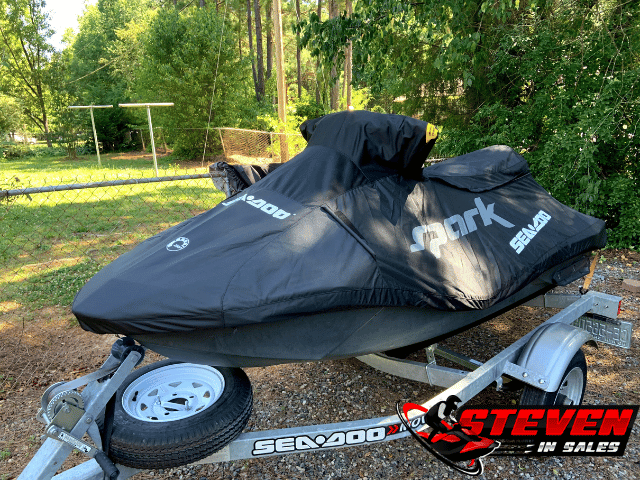
Storing for the summer is super simple, but there are a few things you should do.
If you ride in saltwater, you need to rinse it off after every ride or when you’re done for the day. The saltwater is very corrosive to boats, and rinsing it off can extend it’s life.
Make sure to dry everything off, especially the seats and handlebars, before putting the cover on. You want to keep the cover on it when you’re not riding it, or it will fade quickly in the hot sun.
Keep Battery Charged
Lastly, for good measure, keep a solar charger on your machine to keep the battery fresh. If you’re riding at least once a month, this is overkill, but still a good practice. (I do this and get 5 years out of my battery)
The Best Places
There are several places you can store it for the summer, winter or all year round:
- Your garage.
- Your backyard.
- Drive-up lift.
- Lift hoist.
- The marina.
- Your local dealership.
- Boat lots.
- Storage units.
- Neighbor or friend’s home.
About the only place you -DON’T- want to keep it for a long time is in the water.
A drive-up lift is fine, but keeping them sitting in the water with nothing supporting it and water always getting to it is not a good idea. Corrosion, leaking, and the scum buildup on the hull will destroy it if kept in the water for months or years. (The scum build up will easily rob you of 5MPH+ of top speed!)
1. In Your Garage
If you have the room in your garage, then it’s a good place to keep it. You always know where it’s at, and it stays out of the elements.
The problem is that the trailer takes up a lot of room, so getting a stand is a must. Here is our list of the best stands.
Transferring to a stand will require at least two guys, but can be done. I've even seen a few people attach a come along winch (Amazon Link Ad) in their garage for this. I've personally used a winch on an ATV to pull mine on and off trailers many of times. Just go slow and be careful.
Video How-To:
2. The Backyard
My go-to is the backyard.
It’s out of the way, doesn’t take up space in my small garage, and when done right it’s fine.
For long-term, I winterize it and put the cover on. The trick after that is to put another cover on your first cover. Then I tilt the trailer back so if water gets in the footwells, it drains out.
Lastly, I take out the drain plugs and forget about it.
3. Drive-Up Lifts
If you live on the water, then a drive-up lift is the best way to go about it, even in the winter.
The trick with storing on a drive-up lift is to make sure the rear is not in the water. If it is touching water while on the drive-up lift, then your lift is too small.
Your engine can be winterized while on the drive-up lift, and many dealerships will even come to your home for a fee to do it. The dealership will even come out to de-winterize, making this one of the most hassle-free options of storing.
A drive-up lift does take a bit of time to get used to, but if you’re on the water and your dock supports them, it’s the best way to store them.
Video How-To:
4. Lift Hoist
A lift hoist is another option for someone who lives on the water, but their dock requires it, or they want something better than a drive-up lift.
You usually see lift hoist being used by people who live on a hill or their dock is high in the air.
Instead of driving on to a floating cradle like with a drive-up lift, you place your PWC over two bunks, and it gets lifted into the air.
Once in the air, you can often swing the lift to the dock and let it rest. Some don’t swing, and you insert a locking pin to release tension on the metal cable.
The better lifts are a whole platform that you can walk around on and are custom-built.
These lifts often come with a remote control that you use to lift the thing up and down.
The downside to this kind of lift is that “it’s slow“, and you must center the vessel on the bunks, which can be difficult to do depending on the waves. Also, this type of lift is a pain to put a cover on and requires more maintenance. I’m more of a fan of the drive-up lifts as it’s quick, easier and cheaper, but sometimes the hoist lifts are the only option.
Video How-To:
5. The Marina
A marina is a place to keep boats and the best option if you don’t have a trailer or a truck to haul it around. Many dealerships will even go to the marina to pick up your machine if you need to service it, some marinas even have techs that can do many things for you too.
Marina’s often have two ways to store your machines, in the water at a slip or dry docking.
Slip
You can rent a slip at a boat marina, with many even having spots for jet skis as they have drive-up lifts, or it’s a regular boat slip, and you can add your own drive-up lifts.
Dry Docking
The other option at the marina is dry docking.
With dry docking, they use a forklift to get your craft off the boat rack and place it in the water. These forklifts are huge as they’re meant to pick up the large boats there, but they also go high in the air, so it’s common to see them stored 4 or even 5 high. So a marina may have more storage for dry docking than slips.
The downside with dry docking is that it requires an employee to pick the unit up and put it in the water. This means you can only ride when they’re open. Many marinas are flexible and if you call ahead, they can put the thing at the launch and when you’re done, just tie it up, and they’ll get it when they open back up. It’s not a huge issue as most marinas are open when people want to ride.
Many of the marinas will fill the thing up with gas, clean it and even winterize it. While marinas are the more expensive way to store, it’s a
great service and the easiest way to have a jet ski. It’s almost like having a personal butler, and the people working there are usually super nice.
6. Your Local Dealership
Not every dealership offers it, but many of them may have a lot you can keep your craft at.
I know many dealerships will do it during the winter months to drive business.
If you only need a place to store your machine for the winter, then your local dealership maybe the best option. Many of them even do a package deal with a winterize, de-winterize and cleaning.
You might be surprised how affordable the rates that many dealerships have for winter storage, if you need temporary, give your local dealership a call.
7. Boat Lots
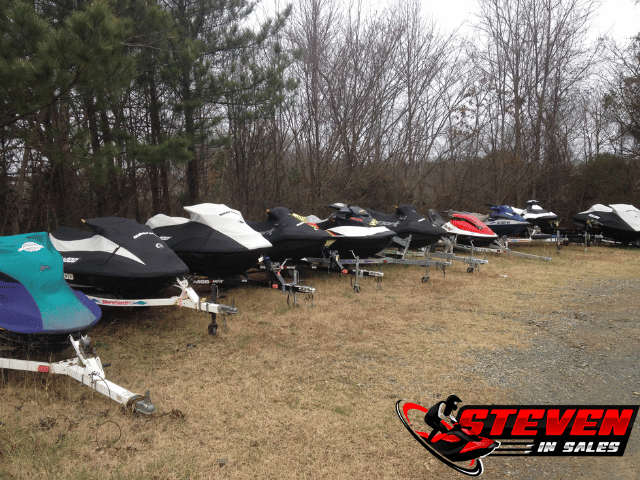
A boat lot is simply a company with some empty land that is usually fenced in.
You pay a monthly or yearly fee to keep your PWC on a trailer inside a locked gate. It’s not always covered and may just be a simple grassy field, but it works!
This type is similar to storing it in your backyard. I find that many of them have grass, and many of them don’t like cutting the grass! You also have to deal with trees and the things that fall from them, so a “double cover” is a must!
Otherwise, it’s often the more affordable option of storing, and it’s not in your yard, or you may not have a yard.
You usually find these boat lots near boat ramps, so it cuts down on the commute to the water, which makes it better than other lots.
Just make sure to get a trailer tongue lock when storing in boat lots.
8. Storage Units
You can keep the thing in a self-storage units you see all over the place.
You’ll need to keep your dimensions in mind, I have a post here that can help you with that.
A unit will be better than a boat lot as you can get a closed space with a lock on it. Many units even have boat and RV storage. They are also more likely to have cameras, but still not theft proof.
Overall, a storage unit will be a little nicer than a boat lot.
9. Neighbor or Friend’s House
Let’s not overlook keeping it at a friend’s or neighbor’s home.
You may even be surprised by how many people live on the water, have a dock, but keep –nothing- on it, so they rent the space out. Just check out Facebook or talk to people, it has become very common these days. (There are even apps for this!)
What I Do
I, personally, have a friend who lets me keep mine at his dock during the summer months. It’s a great system, I have easy access, and he can ride whenever he wants.
Storing at a friend’s lake house or renting someone’s dock is a great option if you don’t have a truck or trailer.
You don’t Always Need A trailer
If you live on the water or keep yours at the marina, then you don’t need a trailer.
Many customers don’t own or want a trailer. Since jet skis don’t come with trailers, if you don’t need it, then don’t get one.
Dealers Will Pick You Up
Most dealerships will come pick you up and drop you in for repairs.
There is always a charge for it, but worth it compared to buying a maintaining a trailer.
Trailers Hold Their Value
About the only good thing about a trailer is that they hold their value very well.
So getting out of one is easy, but buying a used one is hard because of how much in demand they are. A double aluminum trailer is like gold, don’t sell it unless you really need to get rid of it.
How To Store Without A Trailer
If you choose not to get a trailer, the next best options:
As talked about in the last section, you don’t need a trailer if you live on the water or keep your ski at the marina. If you need to bring in your ski, most dealerships will come and pick you up and drop you in for a fee.
I’ve seen several customers even split getting a trailer with their neighbors or friends and either keep theirs on a stand in their garage or keep it on the lake.
Keeping it Outside
A PWC can be stored outside just fine, so long as it’s stored properly.
If it’s being stored for long-term like winter, then it needs to be winterized.
When kept outside, it’s best to keep a cover on it. If it is on a trailer, it helps to tilt it back so water drains out the footwells.
Remove the drain plugs when on land, so if the hull takes on water, it can drain out.
Long-term, Max Time
If the engine had the proper put-away procedures done, it can be stored for years.
It’s best to not let it sit for too many years, as parts will start to decay as they’re not being lubricated or cleaned.
They can sit without being used for years and still start right back up and be fine in many cases. Though, you want to go over the machine if it’s been sitting for multiple years without ever running.
I’ve had models that been in crates for 5 years start up and be fine. It’s rare, but there have been new ones sitting in crates that go unnoticed for years and start up fine. I’m not sure how it happens, but things just fall through the cracks sometimes.
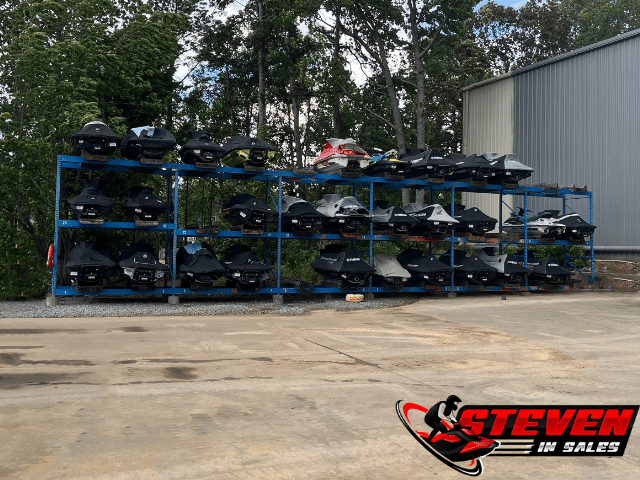
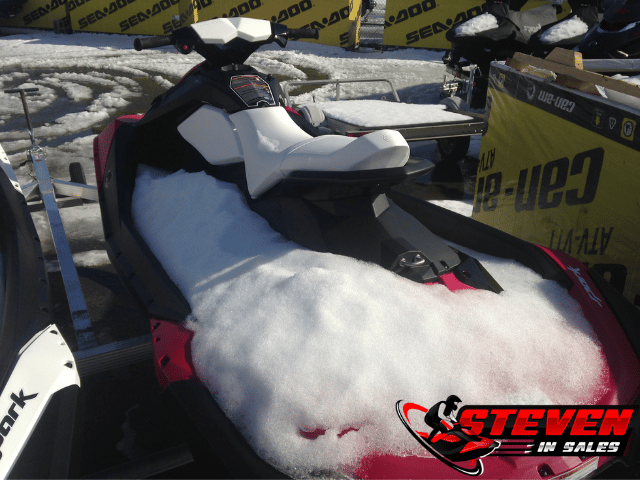
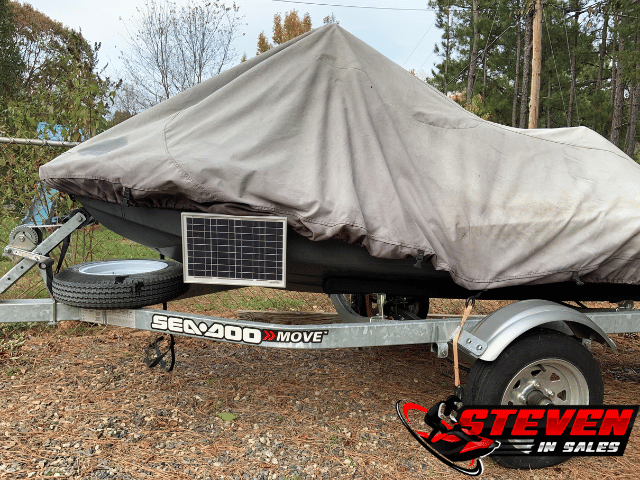
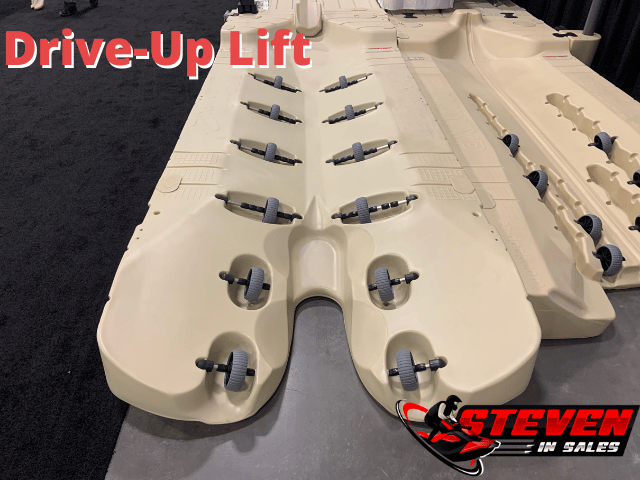
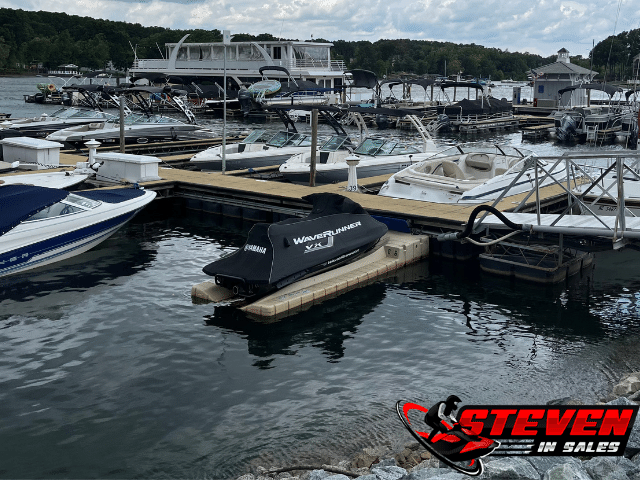
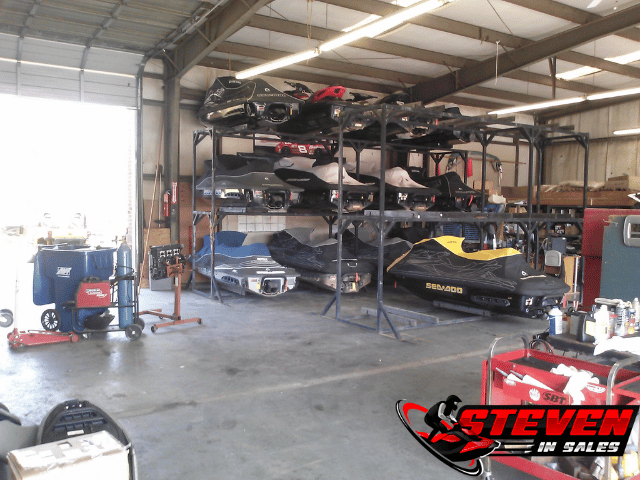
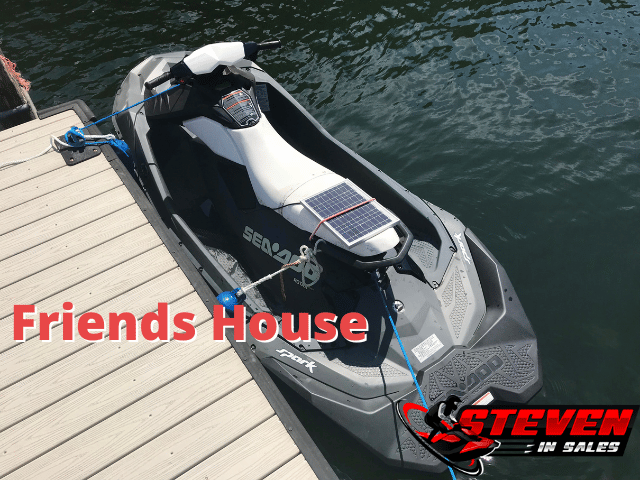
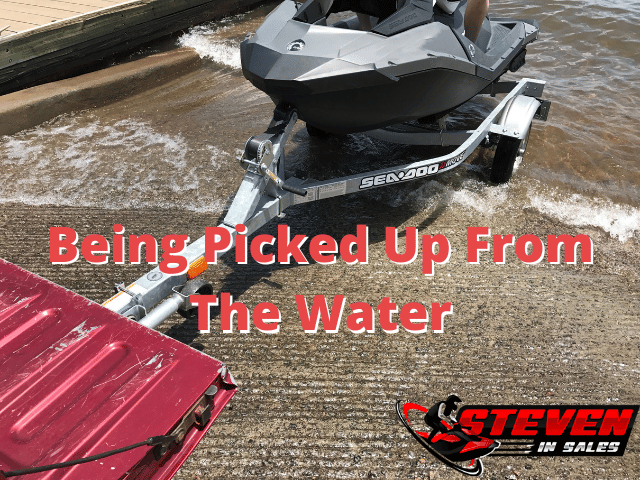
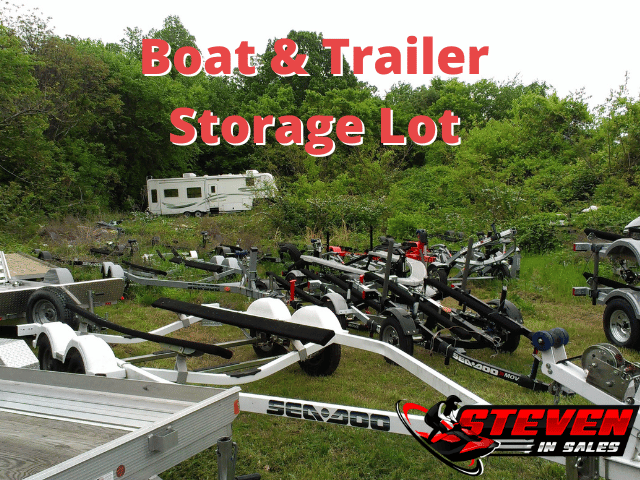
Hi
I’m a new jet ski owner and had my Yamaha winterized last year to store in my garage. It was a bit of overkill as the temperature doesn’t drop below 40F ever in my garage. I used a Trickel charger on my battery. I’d like to leave it in the garage – any tips? I know that I need to drain the gas ( or at least I believe I do)
Carolyn
I still like to flush the jet ski with RV antifreeze just to be safe and put fuel stabilizer in the gas as covered here: https://www.steveninsales.com/how-to-winterize-a-jet-ski/
I, personally, keep the fuel level at one or two bars for winter storage. I know some like to fill it up to the top or drain it, but almost empty has worked very well for me. I cover that in more detail here: https://www.steveninsales.com/store-jet-ski-gas-tank-full-or-empty-long-term/